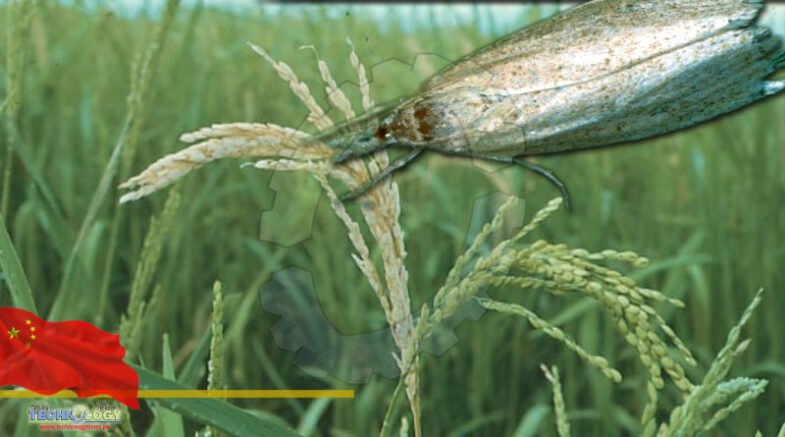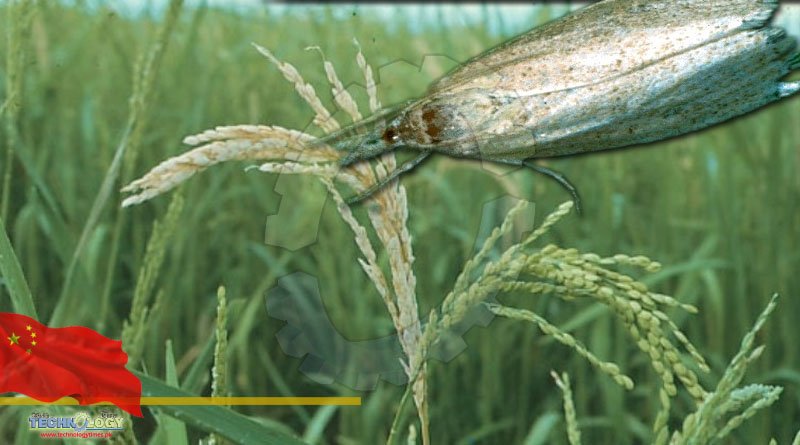The striped stem borer and other major paddy pests and pathogens affected more than 57 million hectares of rice last year, according to data provided by the Ministry of Agriculture.

Rice plants attacked by the striped stem borer, a major paddy pest, emit airborne substances to warn their neighbours so they can prepare chemical defenses, according to Chinese scientists. In accordance with a study published in the plant science journal New Phytologist in mid-October, the findings can help improve the widely planted crop‘s resistance against one of its most devastating pests, a boon to global food security.
Herbivore-induced plant volatiles (HIPVs) are complex mixtures of volatile organic compounds emitted by herbivore-attacked plants. According to experts, they play a critical role in plant-insect interactions. Insects, for example, can use HIPVs to locate their hosts or prey and avoid predators.
They can also be detected by nearby plants, acting as airborne signals during inter-plant interactions. Volatiles emitted by plants attacked by herbivores or pathogens can be sensed by other plants, resulting in defence priming, which has been widely observed in corn, tomato, and tea plants.
The study by Chinese Academy of Agricultural Sciences agrarians and a Swedish researcher went a step further. Chemical and molecular analysis, as well as insect behavioural experiments, were used to decipher the process.
According to their findings, pre-exposure to stem borer-induced HIPVs allows rice plants to activate a more intense response upon attack by producing a surge of jasmonic acid and defensive proteinase inhibitors that are harmful to the pest’s larva.
Furthermore, “primed” plants were found to emit more volatiles, which attract a wasp that parasitizes the stem borer.
“Understanding the details of the underlying processes should facilitate studies to elucidate similar interactions in other systems and may lead to strategies that exploit the odorous alert signals to manage the striped stem borer and other destructive pests,” according to the paper, which was partially funded by China’s National Natural Science Foundation.
The striped stem borer and other major paddy pests and pathogens affected more than 57 million hectares of rice last year, according to data provided by the Ministry of Agriculture and Rural Affairs. The study is part of China’s larger effort to increase food output through agricultural sciences and technologies.
Last month, the Ministry of Agriculture and Rural Affairs announced a programme to increase breeding research in the hopes of developing homegrown, high-yielding crop and livestock varieties to better feed the country’s 1.4 billion people.
Rice is a staple food for 3.5 billion people worldwide, with more than 1 billion earning a living from the crop, according to Qu Dongyu, director-general of the Food and Agriculture Organization, who spoke at a virtual forum last month. The crop also feeds roughly 60% of the Chinese population.
China has long been at the forefront of rice research. Yuan Longping received the 2004 World Food Prize for developing hybrid rice with an output of around 7.5 metric tonnes per hectare, compared to 4.61 tonnes globally.
Originally published at China Daily
